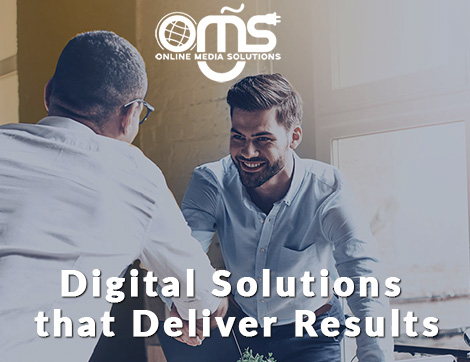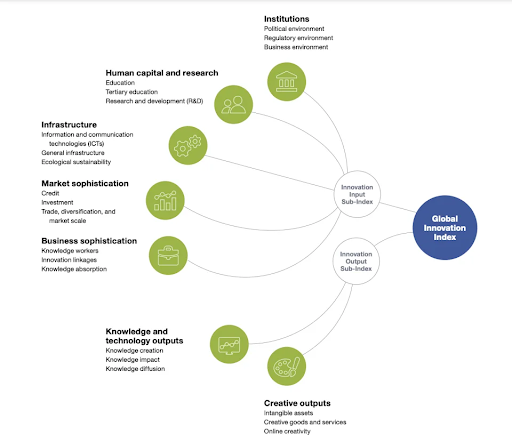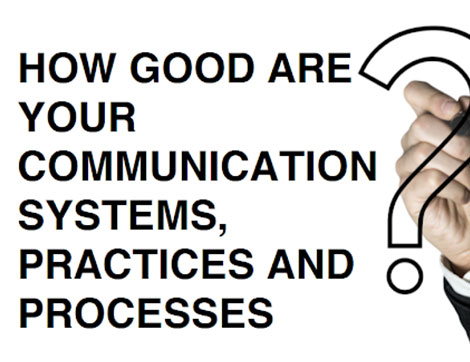Sukh Sandhu:
– Hello, everyone. Welcome to another professional development session brought to you by Compliance and Quality Assurance, CAQA, Edu Learning, CAQA Skills, The VET Sector and Career Calling International. We would like to pay our respects to traditional owners of the land and to their elders, past and present. Let me remind you that this webinar is not sponsored or affiliated with the Australian Skills Quality Authority, ASQA or any other regulatory body. We are only sharing our experiences from the many audits we have attended. A substantial amount of information will be included into this professional development session. You can contact us at info@caqa.com.au if you would like us to conduct a professional development session for you and your staff members. We hope that the information presented today will be relevant to you and your organisation. It is based on questions that have been sent through to us and also the questions that we have encountered in audits. My name is Sukh Sandhu, and many of you are familiar with me from my work in the compliance and quality industry, audit, regulatory, risk management, corporate governance fields. I am an ISO 9001 lead auditor and have been working in the education and training industry for over 25 years. I have worked as a National Compliance and Quality Assurance Manager with the Australian Catholic University, Chief Operating Officer and Chief Executive Officer for a number of training providers. I have also worked with Australian Skills Quality Authority as their business systems project official back in 2011/2012. My qualifications include two MBAs, three Masters in IT and systems, a Graduate Diploma of management learning, Diploma in training design and development, Diploma in vocational education and training, Diploma of work health and safety, Diploma of quality auditing, Advanced Diploma of management, Advanced Diploma in marketing, human resources, information technology, and a number of other courses and qualifications. I have been working as a lecturer and as a trainer and assessor since 1998. I have been a vocal advocate of audit reforms and system centered auditing practices rather than auditor centered auditing practices for many years. And today I’m joined by my colleague, Anna Haranas, who is our General Manager. Anna has over 35 years of management experience in education and training, early childhood education and care, hospitality, retail management and allied health industries. During this time, she has had extensive experience in the management of RTOs and apprenticeship services, participating in several Federal and State regulatory audits. Anna, in her roles, has been responsible for planning, directing, leading and managing strategic and long-term goals. Her qualifications include two Bachelor degrees in hospitality and tourism, Graduate Certificate in adult language literacy and numeracy support, Diploma of quality auditing and Certificate four in training and assessment. All questions that we have received before this webinar will be answered by me and Anna. and if we will have time, then all questions asked during the session will be answered at the end of the session. Remember that you can always email us if you need to have something clarified. Some of the questions and answers in this session may appear to be basic but we have a diverse group of people attending this session. Some of them are just starting out in the sector and others are very experienced and we have tried to make the content relevant to everyone. So let’s get started with today’s session. Anna, over to you now.
Anna Haranas:
– So thank you for that introduction, Sukh. I’m very excited to have everyone here. One of the questions that keep on coming up, and I would say that it comes from industry and for people who want to enter training and assessment is what is the difference and what is a trainer and what is an assessor? So maybe you can answer that, Sukh?
Sukh Sandhu:
– So a trainer is someone who teaches. They are more of a facilitator than an assessor who is more of an evaluator. Trainers are responsible for the development of the people they are training, usually in a formal setting. Trainers provide feedback to their students on what they are doing well and what they need to improve on. Trainers also keep track of the progress of their students, evaluate them, and make sure that they are staying on course with the set objectives. A trainer’s job in the VET sector is not only to teach people new skills but also to help them apply those skills. This means that they are not just providing information on how something works but they are teaching their students how to use that knowledge in a workplace. Assessors evaluate students’ knowledge and skills. This can be based on work samples, projects, portfolios, or presentations or observations in the workplace. So when assessment starts and then assessor comes in, he or she doesn’t usually provide any training on how to do something, but instead will offer feedback on what the student can do. The trainer and assessor can be the same person or different people.
Anna Haranas:
– Thank you, Sukh, for clarifying that. And I think this leads into the next question and the next topic that we have encountered which is, what is the role of a good trainer or assessor? And that question needs to be asked and answered because what we have found in feedback is that some training organisations seem to think that trainers are only there to give the students answers to the assessment questions. And I’d like to think that a trainer is much more than that. So, Sukh, do you want to talk about the good trainers and assessors?
Sukh Sandhu:
– Absolutely, Anna. And I agree with you, some of the RTOs, they do think that the trainer is just there to support students, telling them the answers to their assessments. But trainers don’t just train, they listen, they learn, they plan, they adapt, they help, they sooth, they challenge, and they tolerate. Students expect all this and often more besides. But for a trainer to be effective at training, they must be very clear about what is most important. The role of the trainer is to design and facilitate the implementation of training. Trainers in an education context are educators who plan and carry out the process of instruction. The role of the assessor is to evaluate the effectiveness, applicability and efficiency of the training. Assessors in an education context are educators who will judge and determine the degree to which a student has met the requirements for, or has achieved a particular educational goal. A good trainer and assessor, they design and facilitate the implementation of training. They understand and support learner needs. They contextualise and customise the training and assessment resources. They participate in the validation sessions. They help amplify positive behavior, taking care of good relation between learners and other stakeholders. They act as a moderator and presenter. They support learning.
Anna Haranas:
– Great, and I think if we think back, I think everyone that’s in this session today has been educated at some stage. I’m assuming that everyone’s gone to school at whatever level or come through some education. I think we can all remember the educators that were inspirational and could make the most boring subject come alive. But also the other side of the coin, the teachers or the educators who we just thought, well, they act basically like a sleeping pill. So, Sukh, for those people who want to become qualified trainers and assessors, how do you become a qualified trainer and assessor in Australia?
Sukh Sandhu:
– To be a qualified trainer or assessor, you must ensure you meet a number of criteria such as having an appropriate TAE qualification to show the trainers have current knowledge and skills in vocational education and training; have vocational competencies to what they are delivering and assessing; having current industry skills directly relevant to training and assessment; having current knowledge of vocational education and training that informs training and assessment practices; and undertaking relevant professional development. So a number of these criteria is applicable to be a qualified trainer and assessor in Australia.
Anna Haranas:
– So, Sukh, I know that there are probably very few people in this country that can beat you on understanding the legislation and regulations, because you know that I come to you and ask you these questions. But what I wanted to ask you is, what does the legislation regulation and guidelines say about trainers and assessors? What clauses it applies?
Sukh Sandhu:
– Sure absolutely, Anna. So the trainers and assessors must comply with the requirements mentioned in Clauses 1.13 to Clauses 1.16 of SRTOs 2015. The fact sheet released by ASQA also states that you must retain sufficient evidence for each trainer or assessor to demonstrate they are competent, current and undergoing professional development training. You must verify and keep records of all information your trainers and assessors present to you by contacting the providers who issue the academic qualifications. You must do referee checks at the time of employment. Trainers and assessors delivering any qualification or skill set from TAE Training Package other than Certificate IV Training and Assessment or any assessor skill set must hold a TAE training product or at least to the level being delivered. The current industry skills held by trainers and assessors need to be consistent with the requirements of any training package or accredited courses they are delivering; need to be consistent with the required skills for trainers and assessors that your RTO has identified through industry engagement. A number of these points, we will discuss later on as well. So that’s why I’m not going into details at this stage but we will talk about these points later on.
Anna Haranas:
– Okay. So when you say TAE, what are the competencies that must be met by the trainers? TAE, for those who are new, means Training and Assessment.
Sukh Sandhu:
– So there are a number of competencies. Having an appropriate TAE qualification to show that trainers have current knowledge and skills in vocational education and training, is the first criteria. As of 1st July, 2019, only a person who holds one of the following credentials, such as TAE40116 Certificate IV in Training and Assessment, or TAE40110 Certificate IV in Training and Assessment plus the TAELLN411, that is a Language Literacy and Numeracy unit, and TAEASS502, that is a assessment design unit, or there are superseded units of competency. So if it is TAELLN411, either that unit, current one, or TAELLN401A. If it is a TAEASS502, then it could be either that current unit or TAEASS502A or TAEASS502B or a diploma or higher level qualification in adult education. Assessment may be undertaken by a person who holds one of the credentials, those we have already discussed, or TAESS00011, that is assessor skill set or both the TAESS00001 assessor skill set and TAESS502, design and develop assessment tools. And then the next criteria is having vocational competencies to what they are delivering and assessing. It’s all about industry qualification or equivalent. The definition of vocational competencies. Vocational competency in a particular industry consists of broad industry knowledge and experience, usually combined with a relevant industry qualification. A person who has vocational competency will be familiar with the content of the vocation and will have relevant current experience in the industry. Vocational competencies must be considered on an industry by industry basis. And with the reference to the guidance provided in the assessment guidelines of the relevant training package. In all the audits that we have been part of, the regulatory body has asked the exact units of competency, not a superseded unit, to demonstrate vocational competence. Auditors expect you to map your industry skills and currency to each performance criteria if you do not hold the same unit of competency. Equivalence can be demonstrated through workplace documents. Your past training experience, professional development activities, portfolios, validation and moderation, simulations, work release, in-service training. A number of tools you can use to track your knowledge and skills in industry areas, such as e-portfolios, spreadsheet and calendar, visual organiser, and a number of other tools. And I will add information related to current industry skills requirements for trainers and assessors now. Anna, over to you.
Anna Haranas:
– Thank you, Sukh. So current industry skills are directly relevant to training and assessment. What does that actually mean? This is what you do to demonstrate that the knowledge, skills and practice of a trainer and assessor reflects the current industry practice and is directly relevant to the training and assessment being delivered and assessed. In some industries, there is very little change. It doesn’t matter how long you’ve been doing something, but the industry is still doing the same things. In other industries, and there are many of them, this actually changes and all we have to do is think about the IT industry to realise that as soon as we learn something, it’s basically obsolete and they’re off to the next step. So the definition is that industry currency and professional obsolescence, so that obsolescence means that something is gone, refers to the competence of an individual to perform their role. The knowledge required in occupation does not remain static, we know that. So workers need to continuously update their skills. As vocational education and training VET practitioners, you train the individuals to enter this occupation. So it is important to ensure that your industry knowledge and skills are current, because what you don’t want is to train students, have them graduate, then come out in industry, they apply for work and the employer turns around and says, “Oh, we don’t do that any longer.” Because it means that they also will not recommend you for the future or any students. The training product should be delivered by a trainer and assessor who is compliant, up-to-date and current with the following. The trainer needs to know about content. So they have to know how to do the job of delivering and assessing the qualification. There has to be a context. So does this information clearly show the relationship between what you are delivering and what you have experience in? Currency, how do you know if something has changed in your industry area and that you are up-to-date with current work practices? This can be determined on an industry by industry basis with reference to assessment guidelines or the relevant training packaging qualification. And according to our experience, most of the ASQA auditors consider only two years as the criteria to evaluate industry currencies. So what is relevant for your trainers and assessors is what they’ve done in the last two years. And like I said, in some industries, not much changes. In others, a lot changes. So the training and assessment can only be delivered by people who have a clear and verified relationship between the train- Where there is a clear and verified relationship between the trainers’ and assessors’ current industry skills and knowledge and the qualification or the units of competency that they are delivering and assessing. How do you stay up-to-date in terms of the industry currency? Well, there are many ways. A few of them can be done through attend your industry’s trade events, workshops, conferences, events like that. Some industries have technical seminars and other industrial events. You might be reading industry magazines and journals. So you have a subscription and you could show some kind of evidence that you have actually read those magazines and articles. You can undertake online research. Again, having the logs to say that “I looked at my industry and I researched this on this day. This was what I was finding. This is how I updated my industry knowledge.” A good way is obviously to engage in industry and networks. That’s a fantastic way. Because at the same time as you are getting your currency up, you’re also basically, if you’re lucky, you’re doing business development. You can participate in LinkedIn groups and all kinds of other social media type of events. Sukh will discuss the VET currency now. So over to you, Sukh.
Sukh Sandhu:
– Thank you, Anna. So having current knowledge of VET that informs training and assessment practices. It is to demonstrate that trainers and assessors are staying up-to-date with VET theory and practice, and evidence of how the knowledge improved their training and assessment. The definition of VET currencies, that it refers to the competence of an individual to work in the vocational education and training sector. VET current trainer/assessor must develop knowledge and practice of vocational training and assessment, including competency-based training and assessment competencies through continual professional development; undertake professional development that contributes to the demonstration of vocational training and learning requirements. Undertaking relevant professional development requirements that we discussed moments ago. Let’s elaborate that a little bit. So trainers and assessors must develop a PD plan, a professional development plan, and include all the professional development activities they are going to do in the next 6 to 12 months period. They must also meet legislative and regulatory requirements. Training and assessment should only be delivered by individuals who have current industry skills directly relevant to training and assessment being provided and skills that reflect current industry practice directly relevant. So, for example, if we talk about requirements for assessors, some of the training packages, they have very clear instructions mentioned in them that what kind of requirements are there to be an assessor for that particular unit of competency or for that particular training package or training product such as qualification. So in order to deliver the qualification, take example of CPC08 Construction, Plumbing and Service Training Package, you would see that the very clear guidelines are mentioned there, that the trainers must meet minimum competency, recognition and experience in term of formal recognition of competency, at least to the level being delivered. They must have relevant industry experience, that is, workplace experience within the last two years in the competency area being delivered. They must have relevant occupational registration or licensing in areas where there is a regulatory requirement to practice in the jurisdiction where the qualification is being assessed. And there are a lot of other requirements mentioned if you search CPC08 Construction, Plumping and Service Training Package, or other training packages where the guidelines are related to assessors and trainers are mentioned there. So, Anna, over to you now.
Anna Haranas:
– So, I was thinking that, and Sukh’s not going to be happy with me but we have a couple of questions from Ann Marie, so I thought we might break it up a little bit with them. ‘Cause Ann Marie has asked, “What about when there are skills in the training package that are out of date and the industry no longer asks workers to perform? Good question. It actually happens a lot. And it also happens that the training package will say the students or that the auditor has to provide equipment and train students on that type of equipment but actually industry is no longer using it. So, Sukh, you have experienced this. Do you want to answer Ann Marie?
Sukh Sandhu:
– Yes, so thank you so much, Ann Marie. And thank you, Anna. Well, according to our experience, you need to provide the feedback to ASQA, to basically also the training package developers as well. And they would let you know that when they are updating the training package.
Anna Haranas:
– Yep. And sometimes it takes a little bit of time, but I think the most important part of it is actually to inform. Same thing happens if you are going through qualification and you are up-to-date with your industry skills and knowledge, and you discover there is something included in a unit of competency that doesn’t apply any longer or is just simply wrong, you need to notify ASQA and you need to notify the package developers. So that the next time the update comes out, it’s actually been fixed. Ann Marie has also said the HLT, which is the health training package, tells you a specific number of hours that assessors must work in the industry. And her comment is that this becomes very difficult for full-time assessors. Yes, whatever the training package says and specifies is what we have to do. We all know. Like Ann Marie has just commented and said, “There needs to be more flexibility in training packages or just can deliver what the industry is asking for.” We all agree. It’s just a very slow process at the moment. But we can try and change it, maybe, in my lifetime. So, Sukh, did you want to clarify again what the difference is between training and assessment?
Sukh Sandhu:
– Thank you, Anna. So training is the process of acquiring new skills, and assessment is the process of evaluating those skills that you have acquired. Training is all about giving employees or students the skills they need to do their job. And assessment is all about determining if the employees or students can do that particular job. Training is all about preparing someone or something for future use, and assessment, on the other hand, is all about judging, measuring, estimating or evaluating someone or something. The main difference between assessing and teaching is that assessors don’t pass knowledge and skills onto their learners. They focus on asking questions, evaluating, judging the knowledge and skills the learners have gained.
Anna Haranas:
– So the next question I wanted to bring up is, what qualifications can I train and deliver? And I think that previously there’s been some misunderstandings about this because there has been occasions where students have completed a certificate for training and assessment and whoever they did the qualification with has told them that, “Oh yeah, now you can go and train and assess in any industry,” which is simply not true, is it Sukh?
Sukh Sandhu:
– No, it’s not. You should either have the qualification that you are training and assessing, or you should demonstrate the equivalence. You will always need Certificate IV TAE or diploma or higher level qualification in adult education. But there have been so many cases where people basically, they send us questions that, “Okay, I have a Certificate IV TAE. Can I just go and train in IT or management or in other areas?” Well, yes, you need to have Certificate IV TAE or diploma or higher level qualification in adult education. But with that, you also need to have that particular training product as well that you are going to deliver and assess. Anna, over to you now.
Anna Haranas:
– Okay, another question that keeps popping up is that, if I don’t have the same electives in my qualifications as the one I’m asked to train and assess, what happens then? And as you all know, the electives can vary quite a lot. And I believe, Sukh, that there is an ASQA response to this question. So do you want to clarify that?
Sukh Sandhu:
– Yes, so, this is the ASQA response related to that, that if you do not have that elective in that qualification that you are training and assessing, then what you need to do? So what ASQA’s response is that under the Standards, each trainer and assessor is required to have vocational competencies, at least to the level being assessed. This doesn’t mean the trainer and assessor is required to hold that exact qualification or any specific unit of competency that is specified in the training package. In some cases, people may have significant industry experience, but not hold any formal qualifications. In such cases, an RTO would need to analyse the skills and knowledge that trainer and assessor delivers and compare it to the trainer and assessor’s actual industry skills and knowledge. Consider all units of competency including electives in this analysis to ensure that requirements for trainers and assessors specified in the training package or accredited course are met. So they have given one example here about SISFFIT310A, Plan and Deliver Water-based Fitness Activities that is a part of SIS30313, Certificate III in Fitness. And if the trainer doesn’t have this unit of competency, SISFFIT310A, then what they need to do, they need to consider the specific skills and knowledge of a person who can competently plan and deliver water-based fitness activities should hold. The person would need the knowledge and skills required to plan, deliver, and evaluate water-based fitness activities for mainstream clients. They would be able to effectively apply aquatic instructional techniques and hydrodynamic principles on muscles, joints, and cardiorespiratory systems to ensure safe and effective fitness outcomes for clients. All this information is only part of the unit descriptor of the unit so far. And then if you believe that a trainer/assessor’s skills and knowledge match that description of a competent person in that unit, your RTO may be able to demonstrate that the trainer and assessor is vocationally competent. The RTO may choose to create a mapping tool to describe all of the requirements of the unit. So what they say, all of the requirements of a unit, including performance criteria, elements, your performance evidence, your knowledge evidence, everything, and give it documented analysis of how the trainer and assessor has the required skills and knowledge. As always, consider the currency of the knowledge and skills acquired as well. So if you go by what ASQA has clearly put in their frequently asked question section here, then if you do not have a unit of competency, say SISFFIT310A Plan and Deliver Water-based Fitness Activities, a part of Certificate III in Fitness, so you need to make sure that you comply with each and every component of the training package. And their third dot point is that RTO may choose. Well in our experience, you will be required to demonstrate that, okay, you do not have this particular unit of competency, show us that how you meet the requirement. So you need to have, you must have a mapping tool at that stage.
Anna Haranas:
– Well thank you, Sukh. In other words, seeing that you don’t like swimming, you’re not gonna apply for RPL for this one, are you?
Sukh Sandhu:
– No, I’m not going to do it.
Anna Haranas:
– Another question that keeps on popping up and has been popping up for as long as I’ve been in this industry. And some people get quite upset about it is, say that, if I have a higher qualification, I might have a Bachelor’s degree or higher, can I still train in vocational education and training? It’s the million dollar question! Over to you, Sukh. Oh, I’m sorry.
Sukh Sandhu:
– I think you should answer this, Anna.
Anna Haranas:
– Okay. It’s a grey area. It is a really grey area because different auditors have interpreted differently. So our advice is always to try and stay in the black and white as much as you can. And if someone has a higher qualification and they have industry experience, if you want to stay black and white, you have them go and do an RPL for the units of competency that they’re going to train and deliver. I know that in some industries, this makes absolutely no sense at all. And the reason being that there are some industries where, say that you enrol for a Bachelor’s degree, after your second year, you can work at the same level as a diploma-qualified student. But that’s industry. What the vocational education and training sector says is quite different. And sometimes we find in some industries that when you have a higher qualification, it’s more research based whereas the vocational qualifications are exactly that, practical skills. So, yes, a contentious area and I don’t think it’s been quite sorted as yet because people have different opinions.
Sukh Sandhu:
– Yes, so Anna, I’ll also ask basically a relevant question to what you just described. What are the higher qualifications or degrees that ASQA may consider relevant in adult education?
Anna Haranas:
– In adult education? Well, according to ASQA, they have given some examples where it gives the knowledge required to train adults can be assessed. So a diploma-high qualification in adult education can include examples such as an Associate Degree in vocational education and training, Bachelor of adult and vocational education, Graduate Diploma in adult vocational education and training. My qualification, Graduate Diploma of adult language, literacy and numeracy. That’s a good one. Master’s of education degree with adult education focus. So not your Master’s degree that’s gonna allow you to go and teach primary school. Then there’s a few odd ones that Sukh brought up, which I raised my eyebrows at which is CASR Part 61 flight or simulator instructor. God only knows why. Or if you’re an army recruit instructor. That’s a higher adult education too. What if I have a higher education, Sukh? So say that I have a diploma, can I train at Certificate III level?
Sukh Sandhu:
– Well, if you can demonstrate your equivalence to each of those units of competency training product in the lower levels, so then you can train at the lower level, then yes. Our suggestion is, as Anna said, always stay black and white. So it is good if you have the same unit of competency that you are training and assessing. Because we can discuss so many, so many, so many examples here, but this one example is coming into my mind right now. So, we were in one escrow audit a few months ago, and this particular trainer had Certificate III individual support, a Certificate IV Disability, Certificate IV Aging Support, a Diploma of Community Services and Advanced Diploma Community Services as well, Community Sector. And then there were a lot of higher education qualifications as well. But the audit scope was Certificate III individual Support. And the qualification that this trainer had, there were some superseded units of competency mentioned in them. And one unit of competency that ASQA selected was from those superseded units of competency. So everything was going well. Audit was scheduled for two days. At the end of the first day, the auditor said that, “Okay, we have completed everything and we are satisfied with everything. So, we will probably finish today. We just have to go through this last trainer file.” And so as they started looking into that trainer file, they identified that particular unit of competency. Then they checked some performance criteria. There were some performance criteria. Those were new in the current unit of competency, they were not part of the superseded unit of competency. And they said that this is non-compliance. They can’t see any mapping tool where those particular performance criteria have been addressed. There were mapping tools to address element level information, but ASQA auditor wanted to see a performance criteria that is in a new unit of competency, not part of the superseded unit of competency. So that time, we had to sit down, we had to go through each and every unit of competency that particular trainer has completed. And then wherever those performance criteria has been addressed in vocational competency to demonstrate compliance with Clause 1.13a, then we somehow put them together and then show that to ASQA. So the short answer is that if you do not have a particular unit of competency, then you should get it. If you have a higher VET qualification, you want to train at a lower level. If you cannot demonstrate equivalence, then we would suggest you have those units of competency at a lower level. So, Anna, my next question to you is, my qualification has been superseded. Do I need to get a new one?
Anna Haranas:
– Well, you’ve sort of already answered that one, Sukh, I think. Always best to have the current qualification or units of competency that you’re training and assess in. And that way, nothing bad can happen to you or the training organisation that you’re engaged by.
Sukh Sandhu:
– Oh this is another question that we received through emails, Anna. What does currency mean? VET currency and industry currency. Do I have to go back and work in the industry I train in?
Anna Haranas:
– Well, that depends on the training package because we know that there are some packages of qualifications where it actually stipulates that the assessor must be currently working in industry. But if we’re generalising, most of them aren’t that specific. And currency is usually evaluated on what you’ve done in the industry over the last two years, which is quite upsetting especially for old people like me, because we always come back and say, “Well, I’ve been doing this for 20 years, you know?” And ASQA, an auditor will only look at what you’ve done in the last two years. The VET currency, as we have discussed, can refer to how many VET sector pay days you’ve attended, validation sessions that you participated in, the forums where you posted your responses or questions, webinars, workshops you have attended. What else you’ve done in the VET sector to keep yourself updated? The industry currency. That’s, you know, how have you maintained your skills, knowledge and competencies with regards to current technology and best practice that’s now applied in the industry? How up-to-date are you with the industry terms and trends and everything else that’s part of the industry that you train in and assess in?
Sukh Sandhu:
– Anna, the next question I’ll ask you, Anna, that we received through our social media, as a manager, how can I make sure that my trainers have currency?
Anna Haranas:
– Well, you have to keep them on a tightrope. No, I’m only joking. As a manager, you do have to make sure that your trainers have access to all the SRTO and VET newsletters that keep coming along. So make sure that you subscribe to those. Because there’s many consultants such as us that are writing and publishing them, you know, including the ones that we do which is the CAQA newsletter and the VET Sector newsletter. It’s really good if your trainers and assessors can attend regular professional development sessions from different types of organisations that might be VELG or ITECA or Edu Learning or the VET Gurus or Take Another Look, or the ones we run, CAQA Skills. ASQA has been doing excellent professional development sessions lately. And, you know, keep up-to-date with the Department of Education and Training and subscribe to it. And what I would say is that if you yourself participate in professional development or learning like you’re doing today, when you get your trainer team together, you can discuss the things that you have learned or observed while you were doing your professional development. Make sure that there is always one person in your organisation that rates and attends this type of things, but they can, like I said, then run their own. You can run your own internal professional development sessions, and have attendance and someone keeps notes on what was discussed and what was shared and what was learned. You should ask your trainers and assessors to subscribe to industry-based magazines and newsletters and forums. And give them time and opportunities to work in the industry, even if it’s volunteer work. That’s how you do it. So the next question, Sukh, is the evidence that I need to collect for my trainers to prove that they are current.
Sukh Sandhu:
– So you need to make sure that you have evidence of what they have completed in the industry or related to the industry according to the units of competency they are training and assessing, and how the information gathered from the industry contributed to their work and training and assessment they are doing. So their practices, the evidence, whatever information they gather, how that actually contributed to their training and assessment practices. And this is also an answer to Sharon as well, that how do you know that the subscriptions, webinars, et cetera, that you are participating in, meet the requirements to be compliant as a trainer and assessor? So really, really good question. So there are so many things, basically. If you look into Clause 1.13a, it talks about vocational competency. So you need to make sure that whatever units of competency or training product you are delivering and assessing, you need to make sure that whenever you participate, such as in validation sessions, you participate in forums, you participate through like, you know, you have some kind of subscription of newsletters or even discussion like email exchange with ASQA or other bodies such as consultants like us, wherever you have any doubt regarding any question related to RTO sector, you have evidence of that. That is your vocational competency. Then we go to 13b, it is all about your industry currency. So as Anna mentioned, all those things like, you know, workshops, webinars, if you cannot get into the workplace because you are either full-time or for some other reasons, you need to stay up-to-date with all the latest trends and technology, whatever that is happening in the sector. So that is very, very critical. And then 13.c, that is all about vocational, your RTO currency. So you need to basically make sure that you participate in RTO. And my apologies here, 13a is your vocational competency. You need to have either that unit of competency or training product, or you need to demonstrate equivalence. And if you demonstrate equivalence, then you meet all those requirements that are part of that training package. So Anna, the next question that I have is, how often does the trainer matrix and resume needs to be updated?
Anna Haranas:
– Okay! If I put on my training manager’s hat, I can tell you that if you don’t get the trainer’s matrices and resumes updated once a year, it gets out of control. And the day you have your audit, you will be a very miserable person. So best practice is to do this on an annual basis. Or, of course, if a training product as a qualification or skill set or unit of competency changes, then you need to do it too.
Sukh Sandhu:
– So, yeah?
Anna Haranas:
– Yeah? That’s the answer to the question.
Sukh Sandhu:
– Thank you, Anna. So this next question we received through email. One of our trainers has started working with a competitor RTO. This person has copied all of our training and assessment material and is using this now in the new workplace. What can I do, and how can I stop this from happening in the future? Anna, to you.
Anna Haranas:
– It happens, what can I say? But there are a number of things you can do. I mean, when it’s already happened, and if you’re really upset, you need to speak to a solicitor who is good with copywriting, and we use Margaret Ryan from IP By Margaret. So we’ve been using her since 2017. You can send a legal notice to the other RTO and the content will depend upon what the solicitor suggests that you should be saying. You can register your copyright. Another really good way of keeping track of this is to digitally watermark your resources. So that involves inserting a hidden message into the fonts that you want to protect, because then if someone shares them or takes them with them, you’ll have the evidence to say that this actually is copyrighted and belongs to us. But to stop this from happening in the future, I think that your contract with your trainer should clearly state what is acceptable and what is not acceptable. And once you have that signature on the contract, legally, you have the right, and you need to explain what constitutes criminal activities. And you have to add a disclaimer and a copyright notice. And you may use Grammarly or turn it into another software to identify copyrighted material. Because it’s just as bad if you’re an RTO and one of your trainers who has worked somewhere else and starts using the other RTO’s material. That will not be very good for you either.
Sukh Sandhu:
– A really good explanation, Anna. So let’s move to the next question that we received through email. Does a trainer need to let their current employer know if they take on additional hours with another RTO? What do you think, that is it a necessity for a trainer to let their current employer know?
Anna Haranas:
– I think it’s good practice. Because if you are gonna go and work with the competitors, it’s really important that the RTO where you’re currently employed knows about it. In a number of the audits that we’ve attended, the auditors calculate the hours the trainers spend at each place, and look at the copies of contracts and invoices as well. So, yeah. You might also want to include that in your employment agreement.
Sukh Sandhu:
– So the next question is- Before I go to the next question, Andrea has put some really good comments there, that copyright, this is intellectual property. So therefore, without copyright, you can still engage a lawyer. Uh, without copyright use, you can still engage a lawyer to act on your behalf to seize and persist in using these resources. Yes, you can. And you have a really good question there. How can you update your resume if you have been- This is a question from Colleen. How can you update your resume if you have been in the same job for the last three years? Anna, do you want to answer this?
Anna Haranas:
– Yeah, you just do it! Make sure that when you do it, you sign and date it with this year’s date. If nothing else has changed, you just update it and you put a new version in. That’s what you do. ‘Cause that’s what we want to say.
Sukh Sandhu:
– So Nathan, regarding your question, how can you register to receive a Certificate of Attendance for this PD session? Everyone, those who are attending this PD session, they will get a Certificate of Attendance signed by Anna Haranas and me. So we will send that to you.
Anna Haranas:
– And you can click for the late, that’s up to you.
Sukh Sandhu:
– And I hope Sharon and everyone else that you have all the answers to your questions. If you still have any follow-up questions, please feel free to ask. We still have a few minutes to go. So, Anna, I’ll continue with the questions that we have received through email. So what are my obligations if I use contract trainers? Do I still need to provide them professional development opportunities? Anna, to you now.
Anna Haranas:
– Do I need to? Well, you know, yes. Well they need to as much as anyone else. So it’s probably a good idea to provide professional development training for your trainers, regardless of how you have engaged them to ensure that they’re confident in all areas, they have the industry competence, currency and vocational competency and all the rest. Because you don’t want to go to an audit and put your whole business at risk because you had a contract trainer who didn’t participate in your professional development training. That’s not a great idea.
Sukh Sandhu:
– So the next question that we have received through email is do I need to pay trainers when they attend staff meetings and other training sessions?
Anna Haranas:
– On a serious note, at the moment, I can say that in the last two years, there have been a lot of very good industry trainers who have left vocational education and training. I think that it’s a trend. It was a trickle, now it’s become a wave. And it partially got to do with how we employ trainers and assessors and how we treat them when they’re working for us. Because if you are really a good industry trainer, more than likely over a period of time, you will start looking for job security and you want your superannuation and all the rest of it. So in many industries and particularly in your traditional apprenticeship type qualifications, these industry professionals, whether they’re electricians, carpenters, plumbers, they go back in industry and they make twice as much money as they are doing when they are training and assessing. They also don’t need to do marking, lesson preparations and, you know, spend time when they’re not getting paid. So that’s something to keep in mind. I personally would always pay trainers to attend staff meetings and other training because, you know, it’s like the old saying, what happens if I train a person and they leave versus what happens if I train a person and they stay? The long and short of it is that a trainer who’s not got currency can bring your whole RTO down. And, you know, that’s gonna cost a lot of money, probably more than what you paid your trainers to attend the staff meeting. So, Sukh, I’ve heard that the Certificate IV TAE is getting changed again. Will I need to update my current TAE?
Sukh Sandhu:
– Thank you, Anna. The new TAE will have a number of new units of competency and substantial changes to existing units. So most probably it will be non-equivalent. At the moment, it looks like everyone will be required to do the new TAE once it is released. So, Anna, I have another question for you. How can I get a job as a trainer and assessor in Australia? Where can I find new staff members? Can you discuss this, please?
Anna Haranas:
– Yes, yes, I can discuss this. Because in the period of time that Sukh and I and our colleagues have been working when we’ve been visiting RTOs and dealing with people in the VET sector, we always get asked, you know, “Where can I find a person? I need a compliance manager. I need this, that and the other.” And we’ve come to a point where we’ve used up all our contacts that we have basically with regards to recommending people or looking, recruiting or others. So we have now launched CAQA Recruitment, where you can put yourself as an applicant if you are looking for work. I mean there’s also Seek and Indeed where you can put yourself down looking for work. The platform that we have put together now is specifically for the VET sector. I mean there’s also social media platforms where you can apply and post job opportunities, as you know. And you can register with recruitment-based groups on Facebook and LinkedIn and other social media platforms. And I know for instance that there is a big group of Early Childhood trainers that are quite active. And we would publish our job vacancies on a regular basis. If there’s anyone that’s participating today that is in an RTO that is delivering Certificate IV in training and assessment, I would encourage your graduates to put themselves down on CAQA Recruitment as applicants looking for work when they are coming close to graduating. And like I said, the RTOs that are looking for new staff can come to CAQA Recruitment and search for new staff as well as post their vacancies. All right, have we got any more time left, Sukh? How are we going here?
Sukh Sandhu:
– So, we are on overtime now. But I think there are some questions in the chat box as well. And some questions that we have received through emails as well. So I think we should probably discuss those questions as well.
– Okay, which ones should we do first?
Sukh Sandhu:
– So I think, before we move to the chat box question, let’s discuss, what should be there in a trainer’s CV? So this is a question that has been asked by so many people in the last few days. So do you want to discuss this, Anna? Or you want me to address this?
Anna Haranas:
– No, you can go.
Sukh Sandhu:
– So an RTO must hold valid files for all trainers and assessors. This includes files for contractors and employees. CV basically should be the current copy of the trainer/assessor’s CV. So in the CV, the RTO’s name needs to be there. The position title needs to be there. The description of the job-role needs to be there. Details about the vocational competencies the trainer and assessor holds, such as Certificate IV TAE and then any diplomas or certificates in the vocational area, that needs to go there. Then information about industry currency and skills, that information needs to go there in the CV. List of VET professional development activities that an individual has attended, all that information needs to go there. Confirmation, the individual should also mention that this is a true and most up-to-date copy of their CV. This declaration needs to go there with their initials and a date. So usually people basically this is a practice that they initial on each page of the CV to confirm the accuracy of the information provided in that CV. And the signature and date of the last update, that must be there on the CV. So it is also recommended that all CVs are verified for currency and authenticity through undertaking of reference checks as well. So this is something that RTOs must do.
Anna Haranas:
– And a very important step actually, and make sure that you have the record to prove that you have achieved reference check, who you spoke to, what day/time and what was discussed. So the trainer files, Sukh. Our experience when we’ve been doing audits, the trainer files are always an area where we can find problems. Let’s clarify what we actually need in the trainer files.
Sukh Sandhu:
– So an RTO must hold valid files for all trainers and assessors, as we discussed before, including their contractors and employees. And trainer file usually start with a compliance checklist. So there is a trainer file checklist in the file that basically says what evidence is acceptable or accepted. The employment contract needs to go there, signed and updated copy of this contract and offer letter and signed copy of position description. A CV, we have already addressed that. That needs to be the current copy. Qualifications, licenses and checks. So evidence of vocational competency, evidence of industry currency, evidence of VET currency, training and assessment qualification, vocational licenses, any vocational tickets or cards, national police clearance check, working with children check, all this information needs to go in the trainer file. Then information related to performance management, such as staff key performance indicators and appraisals that you have conducted. That needs to go there, at least on an annual basis. Trainer observation forms, trainer feedback forms. Information related to how you have conducted induction, such as induction checklist, staff induction session, staff handbook. If you don’t want to put the complete staff handbook, at least put a signature page that the trainer has read, understood and agreed with all the information that you have provided in the staff handbook or trainer handbook, whatever you call it. The direct supervision. Documentation, if you have someone basically who is working under supervision, so then you need to have a comprehensive supervision plan and documentation. HR, payroll, leave forms. So all the personal details form with bank details, tax file declaration, superannuation details, business name confirmation for contractors, ABN and GST information for contractors, and insurance copy. Copy of professional indemnity insurance should also be there.
Anna Haranas:
– Okay. So the professional indemnity insurance probably more applies to when your trainers are working as contractors, because your RTO should have professional indemnity insurance for their staff. Some trainers and assessors do, however, get around.
Sukh Sandhu:
– So let’s discuss that Compliant Trainer Matrix, Anna. What should be the main components of a valid trainer matrix, according to you?
Anna Haranas:
– In the world according to Anna, the trainer matrix should have the following information. You need to list all the training products delivered and assessed by this particular trainer, and mapping to the compliance and regulatory standards. You need to include PD on industry currency in the past 12 months. You’ll need to map the employment history, positions held, employers, dates of employment. Relevant industry experience and training. Current appointments, memberships, and professional industry associations. Professional development planned. And you need to have a declaration and verification check placed.
Sukh Sandhu:
– So let’s discuss the most-
Anna Haranas:
– There’s a lot of information too, Sukh, so I was thinking that if anyone wants a clarification, we could actually send out some kind of spreadsheets or lists.
Sukh Sandhu:
– Definitely.
Anna Haranas:
– Click links you can go through and you can look at your trainer matrices and make sure that they’ve got everything in them. I mean, I don’t know how you can operate if you don’t have a checklist for the trainer files because of all the stuff that needs to go in there and so forth and so on, but we’re happy to spread the love around and give you that information.
Sukh Sandhu:
– So let’s discuss the most common mistakes, Anna, and non-compliance that we have noticed based on the trainer files. Over to you, Anna.
Anna Haranas:
– Where RTOs end up in trouble is where the trainers don’t have the vocation education and training qualifications that they are delivering. That’s a big problem. Or they don’t have industry currency. Or they don’t have VET currency. Quite often, they will have one or not the other. Don’t know why, but anyway. They don’t have signed copies of the employment contract and they don’t have a position description. That’s a big problem. Or the CVs that they have, have not been updated with their RTO’s details saying that this is the current position that they’re holding. The CV is from when they applied for the job, which might be five years ago. The original qualifications have not been cited or verified copies are not in the file. They might have been cited and they might be copied but it’s not verified. And the qualifications and experience has not been verified. And/or the reference checks has not been conducted. And even if the reference check was conducted, it doesn’t actually say who spoke to what person at what date and what was discussed. There’s many auditors that have got a trainer file checklist but when you compare what’s been ticked on the checklist with what’s actually in the file, somehow a few bits and pieces seem to have gone walkabout and they are not in there. Or the other good one is, the RTO not following their own policy and procedures with regards to developing and maintaining and updating trainer files. Because that’s a favorite from the auditor, I found. This is your policy. This is your procedure. This is the file. Please explain. And that there are no staff appraisals or evaluations or anything like that. So maybe we should discuss the latest regulatory practices, Sukh.
Sukh Sandhu:
– Sure, Anna. So this is a new one. In audits we have seen that the RTO, if they basically go to industry representatives for industry engagement, and there has only been some questions being asked there in industry consultation form such as, what are the trainers and assessor skills to train or assess a particular unit of competency or training product, that was deemed okay. But in the last few audits, we have seen that now ASQA auditors, they want to see that if the actual credentials, the trainer qualifications, that they have been validated by industry representatives and they confirm that, yes, these are the most current credentials to train and assess a particular training product in the industry. So that is a massive change. So, to demonstrate compliance with Clause 1.6 here, you need to make sure that your RTO is using your details and going to industry representatives and asking them if these are the most up-to-date and current credentials to train and assess a qualification. This is the latest regulatory practice. So ASQA auditors, on record, they said that they have identified that not many training organisations are doing this. And so that’s why they will get more onto it to find out who is not doing it. So let’s answer the questions that we have received through the chat box now.
Anna Haranas:
– It’s actually more feedback. People are saying, “Thank you.” So that’s a good sign. So what I was gonna say, rounding off a little bit here ’cause it’s Friday afternoon and I’m sure that everyone’s dying to go back to work, is that if you have any more questions or anything is unclear, you just approach us. Email us info@caq.com.au. We will try and send out some spreadsheets and forms. And yeah, have a great weekend everyone. We will have a very good weekend after 6:00 p.m. tonight when we are let loose and we can finally go shopping! Sukh?
Sukh Sandhu:
– Thank you so much, everyone. Thanks.
Anna Haranas:
– All right, take care. And maybe we’ll see you next month. Last Friday of the month at the same time. Have a fantastic weekend. Bye!

























